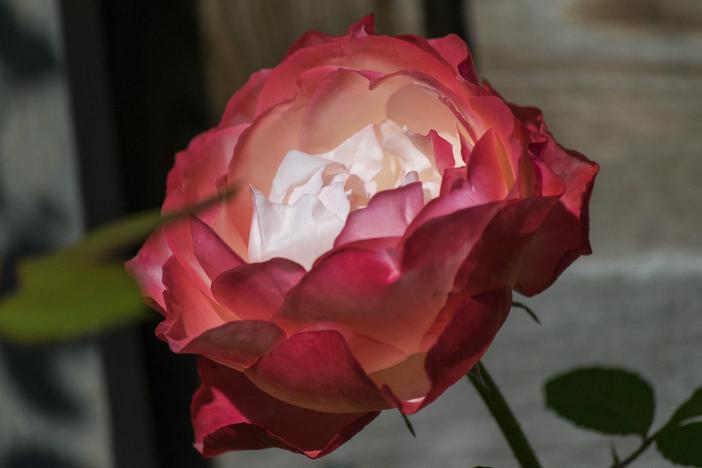Tea Rose
(Rosa odorata)
Tea Rose (Rosa odorata)
/
/

Paul van de Velde
CC BY 2.0
Image By:
Paul van de Velde
Recorded By:
Copyright:
CC BY 2.0
Copyright Notice:
Photo by: Paul van de Velde | License Type: CC BY 2.0 | License URL: https://creativecommons.org/licenses/by/2.0/ | Uploader: PiùChéBella | Publisher: Flickr




Estimated Native Range
Summary
Rosa odorata, commonly known as Tea Rose, is a deciduous shrub originating from the Yunnan province in South-Central China. It is a naturally occurring hybrid created from the cross of R. chinensis and R. gigantea. This species is significant for its contribution to the ancestry of the tea-scented China roses and their descendants, the hybrid tea roses. The Tea Rose typically grows to a height and width of 1.5 meters (4.9 feet), presenting as a lax, thornless shrub with a graceful form. The cultivar R. odorata ’Mutabilis’ is particularly esteemed for its flowers that change color from yellow to pink as they mature, offering a dynamic display in the garden.
The Tea Rose is celebrated for its fragrant, multi-colored blooms and historical importance in rose breeding. It is often used in ornamental gardens and as a specimen plant. The ’Mutabilis’ cultivar has received the Royal Horticultural Society’s Award of Garden Merit, indicating its exceptional qualities. Cultivation requires an open position with full sun exposure, medium water needs, and well-drained soil to thrive. While generally disease-resistant, Tea Roses can be susceptible to common rose ailments such as black spot and powdery mildew. Pruning is essential to maintain shape and promote vigorous flowering. Other popular cultivars include ’Bengal Crimson’ and ’Bengal Beauty’, each with unique attributes contributing to the diversity of the species in gardens.CC BY-SA 4.0
The Tea Rose is celebrated for its fragrant, multi-colored blooms and historical importance in rose breeding. It is often used in ornamental gardens and as a specimen plant. The ’Mutabilis’ cultivar has received the Royal Horticultural Society’s Award of Garden Merit, indicating its exceptional qualities. Cultivation requires an open position with full sun exposure, medium water needs, and well-drained soil to thrive. While generally disease-resistant, Tea Roses can be susceptible to common rose ailments such as black spot and powdery mildew. Pruning is essential to maintain shape and promote vigorous flowering. Other popular cultivars include ’Bengal Crimson’ and ’Bengal Beauty’, each with unique attributes contributing to the diversity of the species in gardens.CC BY-SA 4.0
Plant Description
- Plant Type: Shrub
- Height: 2-6 feet
- Width: 2-3 feet
- Growth Rate: Moderate
- Flower Color: Orange, Pink, Red, Yellow
- Flowering Season: Spring, Summer, Fall
- Leaf Retention: Deciduous
Growth Requirements
- Sun: Full Sun
- Water: Medium
- Drainage: Medium
Common Uses
Bee Garden, Bird Garden, Butterfly Garden, Fragrant, Groundcover, Potted Plant, Showy Flowers
Natural Habitat
Originating from the Yunnan province in South-Central China
Other Names
Common Names: Tee-Rose , Rose À Odeur De Thé , Rosier Thé , Rosier À Odeur De Thé , Xiang Shui Yue Ji
Scientific Names: Rosa odorata , Rosa ×odorata var. pseudoindica , Rosa gechouitangensis , Rosa oulengensis , Rosa pseudoindica , Rosa tongtchouanensis , Rosa ×odorata var. odorata , Rosa chinensis var. pseudoindica , Rosa indica var. fragrans , Rosa indica var. odorata
GBIF Accepted Name: Rosa odorata (Andrews) Sweet